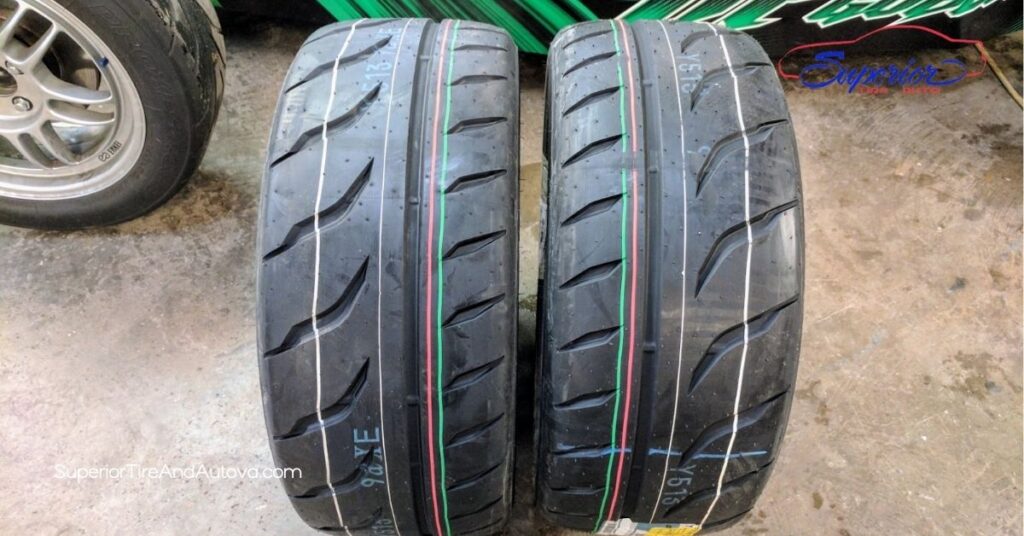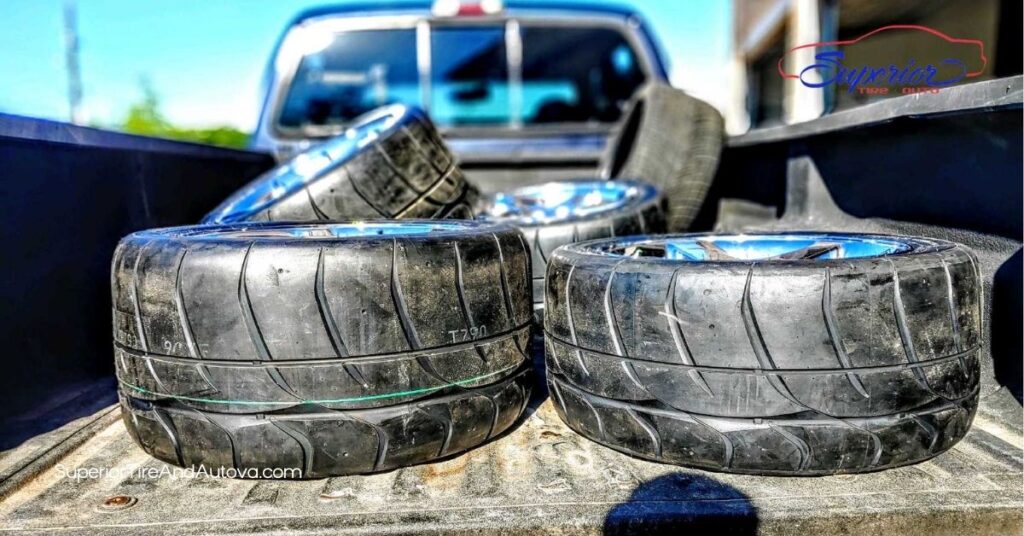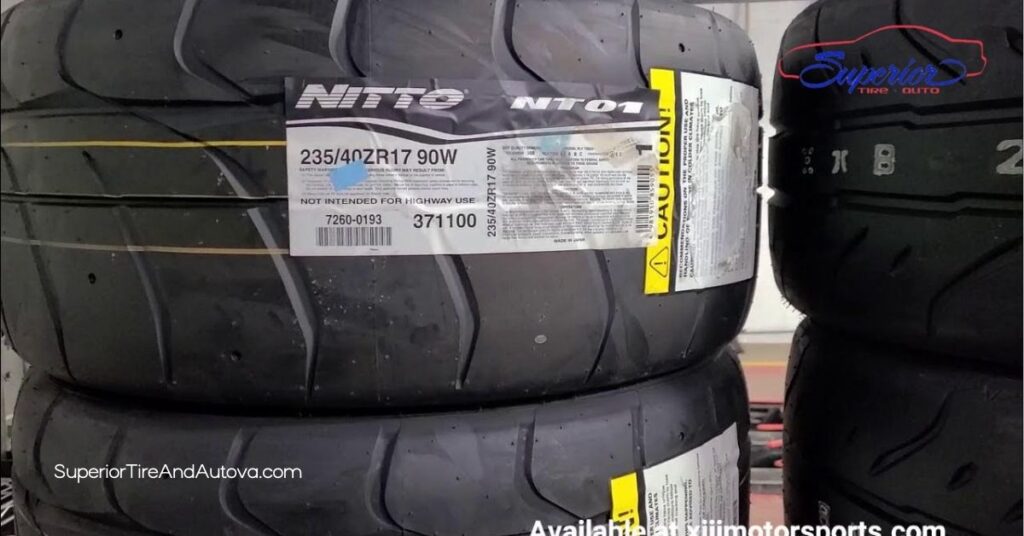When it comes to high-performance tires, the Nitto NT01 and Toyo R888 are two names that often spark debate among enthusiasts. Both options promise exceptional grip and handling, but which one truly reigns supreme on the track? If you’re looking to elevate your driving experience, understanding the nuances between these two tire giants is essential.
Imagine tearing through corners with confidence, feeling every bit of the asphalt beneath you. The right tire can make all the difference in achieving that exhilarating connection. In this text, we’ll jump into the features, benefits, and performance characteristics of the Nitto NT01 and Toyo R888, helping you make an informed choice for your next race or spirited drive. Get ready to discover which tire will give you the edge you’ve been craving.
Overview of Nitto NT01 and Toyo R888

Nitto NT01 and Toyo R888 represent two leading options for high-performance enthusiasts. Each tire offers unique advantages customized for different driving styles.
Key Specifications Comparison
| Specification | Nitto NT01 | Toyo R888 |
|---|---|---|
| Tread Design | Asymmetric | Directional |
| Compound Type | Soft, sticky | Semi-slick |
| Temperature Range | 140°F to 220°F | 160°F to 220°F |
| Wear Resistance | Moderate | Low |
| Optimal Pressure | 30-35 psi | 28-35 psi |
| Weight | 25-30 lbs (varies by size) | 20-25 lbs (varies by size) |
Nitto NT01 features an asymmetric tread design that enhances cornering grip. You’ll find its soft compound ideal for warm conditions. In contrast, Toyo R888 uses a directional design optimized for straight-line stability and responsiveness on curves. The semi-slick compound excels in dry conditions, making it well-suited for competitive track use.
Target Audience
Nitto NT01 targets drivers seeking a balance between road and track performance. This tire appeals to enthusiasts who require versatility without sacrificing grip. Toyo R888 speaks to those who participate in focused racing events and demand ultimate performance. The R888 attracts competitive drivers craving precision and response during races.
Performance Analysis

Performance plays a crucial role when comparing the Nitto NT01 and Toyo R888. Both tires cater to high-performance driving and track use, making your selection vital for optimizing your experience.
Dry Traction
Nitto NT01 excels in dry traction, featuring a road race compound and large tread blocks. These elements work together to deliver consistent lap times and superior grip throughout the entire life cycle of the tire. Toyo R888 also boasts excellent dry traction but requires some warming up to achieve peak performance. The stiffer sidewall construction of the R888 adds to its handling and feedback characteristics but can feel different compared to the NT01. Track enthusiasts often note that both tires provide similar lap times; preferences may vary based on the unique feel and response each tire offers.
Wet Traction
Both tires perform well in wet conditions but with notable differences. The Nitto NT01 shows decent wet traction, although it’s primarily engineered for dry performance. It’s essential to approach wet conditions with caution when using this tire. On the other hand, the Toyo R888 emphasizes a design that considers wet weather scenarios. Enhanced water evacuation reduces hydroplaning risks, making it a better choice when rain impacts your track sessions. Understanding these traits helps in making informed tire choices, especially when racing or driving in varying weather conditions.
Handling and Stability
Handling and stability are crucial for any performance tire. Both the Nitto NT01 and Toyo R888 cater to driving enthusiasts but achieve stability in different ways.
Cornering Performance
Cornering performance stands out with both tires, but the Nitto NT01 often takes the lead in dry conditions. Its road race compound and large tread blocks provide excellent grip, helping you maintain consistent lap times. The Toyo R888 also excels, though it requires a warm-up period to reach optimal performance. R888’s stiffer sidewall construction enhances stability significantly during heavy cornering and braking. The combination of characteristics makes each tire suitable for unique driving conditions.
Steering Response
Steering response impacts your overall driving experience. The Toyo R888’s design promotes quick and responsive steering inputs, improving your connection with the vehicle on the track. In contrast, the Nitto NT01, while slightly less responsive, holds an edge in durability and maintaining performance across multiple heat cycles. This durability contributes to consistent steering response throughout its use, allowing you to feel confident during extended driving sessions. While both tires deliver impressive steering capabilities, your preferences may lean towards the unique strengths of each option.
Durability and Wear

Both the Nitto NT01 and the Toyo R888 exhibit distinct characteristics when it comes to durability and wear. Understanding these differences helps you choose the right tire for your needs.
Lifespan Comparison
For the Toyo R888, users typically report a lifespan of 5,000 to 10,000 miles depending on usage patterns. This can vary significantly based on driving style and conditions. Meanwhile, the Nitto NT01 often lasts longer due to its construction. This tire features a flexible sidewall and larger tread blocks, resulting in better longevity under various circumstances. Shaving the NT01 to 3/32″ can enhance its performance, almost resembling a race slick.
Heat Resistance
Heat resistance plays a critical role in tire performance. The Toyo R888, with its stiff sidewalls, excels in high-performance conditions, providing increased stability. But, the trade-off often includes faster wear rates under extreme heat. The Nitto NT01 offers more flexibility, which helps maintain traction even as temperatures rise, allowing for extended use during heated races or spirited drives. Hence, you should consider the expected track conditions when selecting between these two options.
Pricing and Value

Pricing plays a critical role when evaluating the Nitto NT01 and Toyo R888 tires. Comparing their costs reveals that both options remain competitively priced. For instance, the Nitto NT01 comes in at $136 per tire for the size 205/50-15 with free shipping, while the Toyo R888 is slightly lower at around $131 per tire, plus shipping fees.
Cost Analysis
Cost analysis for these tires indicates they both classify as super-low treadwear competition tires. Expect shorter lifespans than standard street tires, due to their focus on performance. Both tires have a factory tread depth of 6/32″, which is less than some alternatives like the Toyo RA-1, which features a depth of 8/32″. A higher cost per mile associated with both tires arises from this shorter tread life, yet their important performance gains make them appealing for track enthusiasts and high-performance driving.
Overall Value for Enthusiasts
Overall value hinges on performance benefits and tire longevity. Both tires target driving enthusiasts seeking enhanced traction and handling on the track. While the Toyo R888 shows impressive grip, especially after warming up, the Nitto NT01 delivers consistent lap times throughout its lifespan. Enthusiasts may find the slight longevity advantage of the Nitto NT01 justifies its price, while those prioritizing immediate responsiveness may prefer the Toyo R888.
Conclusion
Choosing between the Nitto NT01 and Toyo R888 eventually comes down to your exact driving needs and preferences. If you prioritize consistent performance and durability across various conditions the Nitto NT01 might be your best bet. On the other hand if quick responsiveness and wet traction are more important to you then the Toyo R888 could be the right choice.
Both tires excel in their own ways and understanding their unique characteristics will help you make an well-informed choice. Whichever tire you choose you’ll enhance your driving experience and enjoy the thrill of the track.
Frequently Asked Questions
What are the main differences between Nitto NT01 and Toyo R888 tires?
The Nitto NT01 features an asymmetric tread design for enhanced cornering grip, while the Toyo R888 has a directional tread optimized for straight-line stability. Additionally, the NT01 is known for better durability and performance in warm conditions, whereas the R888 excels once warmed up, especially in competitive track scenarios.
Which tire is better for dry traction, Nitto NT01 or Toyo R888?
Both tires offer excellent dry traction, but the Nitto NT01 generally outperforms due to its road race compound and large tread blocks, providing consistent grip and lap times. The Toyo R888 also performs well, but it requires warming up to reach its peak traction.
How do Nitto NT01 and Toyo R888 perform in wet conditions?
The Nitto NT01 delivers decent traction but is primarily designed for dry conditions, so caution is advised in the rain. Conversely, the Toyo R888 is better suited for wet weather due to its water evacuation features, which reduce the risk of hydroplaning.
What is the lifespan of Nitto NT01 and Toyo R888 tires?
The Toyo R888 typically lasts between 5,000 to 10,000 miles, depending on driving conditions. The Nitto NT01 tends to last longer, thanks to its flexible sidewalls and larger tread blocks, offering potential performance enhancements through shaving.
Are Nitto NT01 and Toyo R888 competitively priced?
Yes, both tires are competitively priced, with the Nitto NT01 costing around $136 per tire and the Toyo R888 slightly lower at approximately $131 per tire. Both classify as super-low treadwear competition tires, leading to shorter lifespans than standard street tires.
Which tire offers better value for enthusiasts?
While the Toyo R888 provides impressive grip after warming up, the Nitto NT01 tends to deliver consistent performance throughout its lifespan. For those prioritizing longevity and reliable performance, the Nitto NT01 may offer better overall value.

